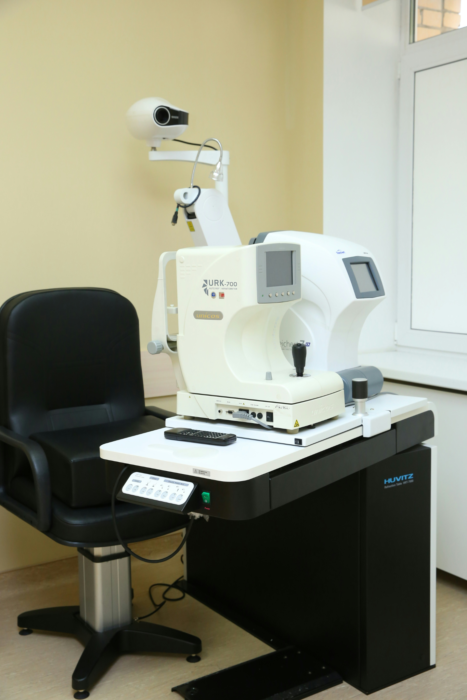Introduction to Health Awareness in the Workplace
Health awareness in the workplace has gained significant prominence in recent years, as organizations increasingly recognize the vital connection between employee well-being and overall productivity. This growing awareness reflects a broader shift in corporate culture, where the importance of fostering a healthy work environment is being prioritized. Companies are now acknowledging that promoting health awareness not only benefits their employees but also contributes to the long-term success of the organization.
Historically, businesses often viewed employee health as a secondary concern, focusing primarily on operational efficiency and profit generation. However, as research continues to highlight the consequences of poor health on workplace performance, organizations are re-evaluating their approach. Health awareness programs, which encompass education on nutrition, physical fitness, mental health, and stress management, are now integral components of many corporate wellness strategies.
The relevance of health awareness in today’s work culture cannot be overstated. With increasing workloads and the demands of modern life, employees are often exposed to higher levels of stress and lifestyle-related health issues. Consequently, companies that prioritize health awareness initiatives are witnessing positive outcomes, including reduced absenteeism, enhanced employee morale, and increased job satisfaction. Furthermore, fostering a culture that emphasizes health can lead to lower healthcare costs and improved employee retention.
In this evolving landscape, businesses are encouraged to implement comprehensive health awareness programs that are not only informative but also engaging. Strategies may include workshops, seminars, and interactive activities that empower employees to take charge of their health. By doing so, organizations are demonstrating their commitment to enhancing employee well-being and creating a supportive workplace where health awareness thrives.
The Importance of Employee Well-Being
Employee well-being is a critical component of an organization’s overall health and success. Promoting mental and physical health within the workplace can significantly influence various aspects of a business, including productivity, job satisfaction, and employee retention rates. When organizations invest in the wellness of their employees, they often experience a more engaged and motivated workforce.
A healthy employee is typically more productive. Research has shown that both mental and physical well-being directly correlate with an individual’s ability to perform tasks efficiently. When employees feel good, both mentally and physically, they are more likely to complete their work effectively, meet deadlines, and contribute positively to team dynamics. Conversely, when mental health challenges or physical ailments arise, productivity can dramatically decline. This decline not only affects the individual but can also hinder team performance and overall company success.
Furthermore, employee well-being is closely linked to job satisfaction. Employees who feel cared for and valued by their organization are more likely to report high levels of job satisfaction. Job satisfaction can lead to increased loyalty and commitment, reducing turnover rates. Retaining employees minimizes the costs associated with hiring and training new talents, making employee well-being a sound business investment. Additionally, a healthier workforce can lead to significant long-term cost savings for organizations. Healthier employees tend to incur lower healthcare expenses and experience fewer sick days, contributing to a more financially stable organization.
In conclusion, fostering an environment that prioritizes employee well-being is not merely a noble endeavor; it is a strategic business imperative. Organizations that make this investment can reap substantial benefits in productivity, job satisfaction, retention rates, and cost savings, all of which ultimately contribute to enhanced organizational performance.
Current Trends in Workplace Health Education
As organizations increasingly recognize the importance of employee well-being, current trends in workplace health education are emerging to foster a culture of health. Effective health education programs are tailored to address specific needs of employees and promote their overall wellness. One prevalent trend is the implementation of wellness workshops, which can cover a wide range of topics including nutrition, stress management, and physical fitness. These workshops empower employees with the knowledge and tools they need to make healthier choices in their daily lives.
Another effective initiative is the introduction of fitness challenges that encourage friendly competition among employees. Such challenges can involve group activities, individual goals, or team events, making physical activity more engaging. By promoting camaraderie and a sense of community, these fitness programs help to enhance motivation and participation across the workforce. Businesses are increasingly adopting gamification techniques to boost engagement in these programs, leveraging social platforms to connect employees and celebrate their achievements.
Mental health resources have also gained prominence in workplace health education. Organizations are recognizing the significance of mental well-being and are proactively addressing it by offering resources such as counseling services, meditation classes, and stress relief workshops. Incorporating mental health awareness into workplace education aims to destigmatize mental health issues, enabling employees to seek support when needed and creating a supportive environment conducive to overall health.
Finally, the advent of technology has transformed health education in the workplace. Companies are utilizing mobile apps and online platforms to provide easy access to health-related information, enabling employees to engage in self-directed learning at their convenience. This integration of technology not only streamlines access to resources but also encourages continuous engagement with health education initiatives.
Strategies for Integrating Health Education into Business Practices
Integrating health awareness into business practices is essential for fostering a culture of well-being within the workplace. One effective strategy is to develop comprehensive health policies that support employee well-being. These policies can include provisions for flexible working hours, access to mental health resources, and wellness programs. By establishing such supportive frameworks, businesses can create an environment that prioritizes health, demonstrating a commitment to the well-being of their workforce.
Another vital aspect is the implementation of structured health education programs. Companies should consider offering workshops and seminars that cover various health topics such as nutrition, stress management, and physical fitness. These programs not only provide valuable information but also encourage engagement among employees. Interactive sessions and expert-led discussions can enhance understanding and motivate staff to adopt healthier lifestyles. Incorporating regular health assessments and feedback mechanisms can further encourage participation, as employees will see the tangible benefits of these initiatives.
Additionally, leveraging technology serves as an advantageous strategy for promoting health initiatives among employees. Digital platforms can host health resources, such as articles, videos, and virtual workshops, making it easier for employees to access information at their convenience. Health apps can also be integrated into the workplace wellness strategy, allowing employees to track their fitness goals and health metrics. These tools not only engage employees but also provide measurable data that can help organizations refine their health initiatives over time.
Incorporating health education into business practices requires a multi-faceted approach that balances policy-making, program development, and technological integration. By committing to these strategies, organizations can significantly enhance the overall well-being of their employees and create a healthier workplace culture.
Overcoming Barriers to Implementation
Integrating health awareness into an organization’s culture is a critical step towards enhancing employee well-being; however, several barriers can impede successful implementation. One predominant challenge is employee engagement. Employees may be indifferent about health initiatives due to lack of awareness, perceived irrelevance, or skepticism about the effectiveness of programs. To address this, businesses need to focus on communication strategies that highlight the benefits of health awareness initiatives for both personal and professional growth. This might include workshops, seminars, or informative newsletters that educate staff on various health issues, fostering a culture of participation and investment in well-being.
Another common barrier is resistance to change. Employees, accustomed to existing routines, may feel anxious or resistant when new health measures are introduced. Organizations can mitigate this by involving employees in the planning process of health initiatives. When employees have a say in program design, they become more likely to embrace new practices. Leadership should also provide visible support for health awareness initiatives, reinforcing the importance of these programs through regular updates and recognition of participation.
Budget constraints often pose significant challenges for businesses striving to integrate health awareness effectively. However, integrating health-conscious practices does not necessarily require large financial investments. Organizations can utilize existing resources by building partnerships with local health organizations or leveraging online resources for educational content. Furthermore, low-cost or free initiatives, such as walking clubs, group exercises, or healthy potluck lunches, can foster community without placing a strain on finances. Ultimately, addressing these barriers requires thoughtful strategies that cultivate enthusiasm and promote a health-focused culture within organizations.
Measuring the Impact of Health Awareness Programs
Assessing the effectiveness of health awareness programs in the workplace is crucial for ensuring their success and optimizing employee well-being. Various methods can be employed to measure the impact of these initiatives, providing organizations with valuable insights into their efficacy and areas for refinement. One of the primary tools for evaluation is employee surveys. These surveys can gather qualitative and quantitative data from participants regarding their knowledge, attitudes, and behaviors related to health topics addressed in the programs. By utilizing anonymous feedback, businesses can gain an authentic understanding of employee perceptions and the perceived value of the health education received.
Another essential metric to consider is the health metrics of employees. This can involve collecting data on key health indicators such as body mass index (BMI), blood pressure, and cholesterol levels before and after program implementation. Tracking these metrics over time enables organizations to gauge the direct impact of health awareness initiatives on employees’ physical well-being. Moreover, measuring participation rates in wellness activities and programs can offer additional insights into employee engagement and enthusiasm towards health initiatives.
Productivity assessments also play a vital role in evaluating the success of health awareness programs. Improved health is often correlated with increased productivity, decreased absenteeism, and lower healthcare costs. Therefore, organizations could analyze work performance and attendance records before and after the introduction of health awareness initiatives. By comparing these factors, it becomes possible to ascertain whether employee well-being improvements translate into enhanced organizational performance.
Ultimately, employing a combination of methods such as employee surveys, health metrics, and productivity assessments will provide a comprehensive understanding of health awareness program effectiveness. This multifaceted approach ensures that businesses can make informed decisions aimed at enhancing the overall well-being of their workforce.
Success Stories of Health Awareness Integration
Numerous businesses have recognized the importance of health awareness within their operations, yielding impressive outcomes in employee well-being and overall productivity. One prominent case is that of Google, renowned for its progressive workplace culture. Google has implemented initiatives focused on holistic health such as wellness and fitness programs, counseling services, and stress management resources. These integrated health practices have not only enhanced employee morale but have also led to a noted increase in retention rates and improved job satisfaction scores, illustrating the tangible benefits of prioritizing health awareness.
Another example is Johnson & Johnson, which adopted a comprehensive health and wellness strategy termed “Healthy Company.” By investing significantly in employee education about health issues including nutrition, smoking cessation, and physical fitness, they achieved remarkable outcomes. As a result of this commitment, the company reported a significant reduction in healthcare costs and absenteeism, while employee engagement metrics soared. This success story underlines how a structured health awareness program can dominate the decision-making processes of healthy lifestyle choices among employees, ultimately enhancing productivity.
Additionally, Microsoft has established a workplace environment that prioritizes mental and physical well-being. Through programs that include mental health days, wellness challenges, and access to fitness classes, Microsoft has seen a notable decrease in burnout rates. The organization also reported a correlation between its health initiatives and higher performance levels among teams. Such evidence supports the premise that integrating health awareness not only benefits employees individually but can also positively impact the company’s bottom line.
These case studies exemplify the effective integration of health awareness in business environments and demonstrate the measurable benefits that can be realized. By fostering a culture that values well-being, companies can thrive and cultivate a healthier workforce dedicated to achieving organizational goals.
Future Directions for Health Awareness in Business
The future of health awareness in business is poised for significant transformation, driven by emerging trends and innovative strategies. As employee expectations evolve alongside advancements in technology and wellness research, organizations must adapt to meet these changing demands. One of the most notable trends is the proactive approach to employee well-being, where businesses are not only addressing health issues as they arise but are also investing in preventative measures and holistic wellness programs.
Technology will play a pivotal role in this evolution. The integration of wearable health devices is anticipated to become more commonplace, allowing employees to monitor their health metrics in real-time. Businesses that leverage this technology can gain insights into overall health trends within their workforce, facilitating targeted wellness initiatives. Furthermore, advancements in telehealth provide employees with immediate and convenient access to healthcare services, which will likely become a standard component of workplace health programs.
Another significant shift is the increasing emphasis on mental health awareness. Organizations are recognizing the impact of mental well-being on overall productivity and employee satisfaction. Future workplace programs are expected to incorporate mental health resources, including counseling, stress management workshops, and mindfulness training, as fundamental components of health awareness. This comprehensive approach will not only enhance employee engagement but also foster a culture of support and openness regarding mental health challenges.
Additionally, as the workforce becomes more diverse, tailored health programs that cater to the unique needs of various demographic groups will gain prominence. Companies may implement personalized wellness strategies that consider cultural backgrounds, lifestyle choices, and specific health concerns. By doing so, businesses will demonstrate their commitment to fostering an inclusive environment that prioritizes the individual health journeys of all employees.
Conclusion: The Business Case for Health Awareness Education
Throughout this discussion, we have explored the multifaceted relationship between health awareness education and overall business success. It is clear that prioritizing employee well-being should be an integral aspect of modern organizational practices. Companies that invest in health awareness initiatives not only foster a healthier workforce but also realize significant advantages in productivity and morale. Engaging employees through educational programs about health and wellness provides them with the tools necessary to manage their physical and mental well-being effectively.
The correlation between a healthy workforce and improved business performance is well-documented. Organizations that emphasize health awareness typically experience reduced absenteeism, lower healthcare costs, and enhanced employee satisfaction. Additionally, fostering a culture of health can significantly improve staff retention rates, as employees are more likely to remain with a company that genuinely invests in their well-being. This commitment to health awareness is not merely a trend; it is a sustainable business strategy that yields long-term financial benefits.
Moreover, in today’s competitive environment, companies must recognize the importance of attracting top talent. Potential employees increasingly seek workplaces that prioritize health and wellness, and organizations that provide robust health awareness education are more likely to find themselves appealing in this context. This proactive approach not only demonstrates care for employees but also enhances the company’s reputation in the marketplace.
In conclusion, integrating health awareness education into corporate culture is not just an ethical obligation; it is a strategic investment in the future of the organization. By facilitating a work environment that supports health and well-being, businesses can cultivate a more engaged, motivated, and productive workforce, ultimately leading to greater success and sustainability in their operations.
How useful was this post?
Click on a star to rate it!
Average rating 0 / 5. Vote count: 0
No votes so far! Be the first to rate this post.

















